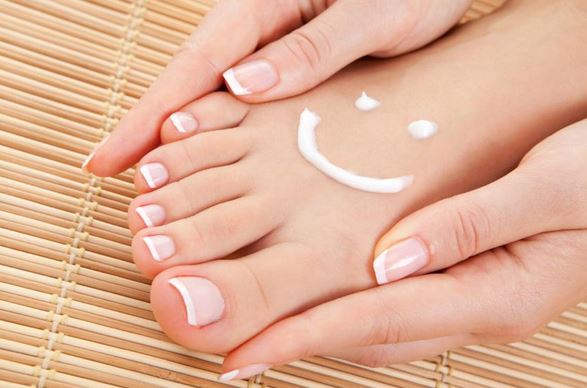A homemade pedicure is one of the easiest and cost effective ways of improving the appearance of your feet and their nails. Essentially, it is a manicure of the feet with a few additions to keep them feeling comfortable in both open toed and enclosed footwear.
The word Pedicure comes from the Latin word ‘pes’ (meaning ‘foot’) and ‘cura’ (meaning ‘care’) and also has relevance to other foot conditions such as ‘pes plano’ which means flat footed.
An at home pedicure is good for several reason,s but most importantly it enables you to check over the feet in detail to identify and hopefully prevent any problems, such as fungal nails and athlete’s foot, before they occur.
A Homemade Pedicure In 10 Simple Steps…
1) Remove Polish
Remove any existing nail polish or gel coverings preferably using a non-solvent-based nail polish remover, this will prevent the nail plate from being damaged and drying out. Try to use cotton bands instead of cotton wool balls so as not to leave any traces of cotton behind.
2) Soak Feet
Use a bowl of warm water or a foot spa and add a drop of shampoo and a tablespoon full of sea salt or Epsom salts as this is good for any cracks in the skin. You can also add an essential oil such as tea tree or eucalyptus. Soak your feet for around 10 to 15 min. If you have heavy calluses you may need to soak them for longer.
3) Exfoliate
Gently exfoliate your feet and heels with a ready-made foot scrub, or a face scrub. This will help with any dead skin and minor calluses. You can also use a pumice stone at this stage or the coarse biodegradable pumice pad to treat minor calluses.
Do not scrub too hard as you may damage the upper layers of your skin and make it sore Use a fine foot file once the feet are completely dry to smooth the skin before applying cream.
Never use a razor to remove calluses as all too often you will end up cutting yourself which may lead to more serious problems. If they are that bad, visit your podiatrist who will scalpel them down for you.
However, remember calluses are there for a reason-to protect your foot from friction and pressure. If you remove them without addressing the cause they may become very sore.
4) Dry Properly
Make sure you dry your feet correctly particularly in between the toes to prevent a damp environment for bacteria and fungus such as athlete’s foot to get hold. Use a foot towel specifically for your feet and no other member of your family to prevent cross infection problems.
5) Tidy Cuticles
Apply a cuticle softener to each cuticle on the toes, carefully rubbing it in and wait 3 to 5 min. Ten very gently push back the cuticles using a clean orange stick.
Tip: if you don’t have a cuticle softener, using olive oil will work just as well.
6) Trim Nails
Carefully trim and cut your toenails with a pair of nail clippers or scissors. Be careful not to cut them to short or you would damage the nail bed or worse make it bleed.
Always use a good quality and clean (preferably sterilised) pair of clippers and cut them straight across.
This will reduce the risk of ingrown nails from cutting down the sides. However, cutting straight across often leads to sharp corners which need to be filed carefully with a special file called a ‘blacks file’ by podiatrists or an ‘ingrown toenail file’ by pedicurists.
Tip: If visiting a salon always make sure the tools/instruments they use have been sterilised correctly so as to avoid bacterial and fungal contamination of the nails and skin.
7) File Nails
A glass file is often best for filing toenails, although metal ones can be sterilised. However, most people opt for the disposable emery board type. File in one direction so as not to split the nail and remove any sharp corners left from cutting as in step six.
8) Massage Your Feet
Give your feet a gentle reflexology style massage to finish your homemade pedicure and make them feel fresh and new again prior to applying any nail polishes.
9) Separate Toes
Use a foam toe separator to separate the toes prior to painting. This will help with any smudging or marking of the nails if you have to walk about while they dry.
10) Polish Nails
Always apply a good quality base coat before applying your nail polish as it will protect your nails from any solvent in the polish, which can lead to destruction of the nail plate over time. Let your nails completely dry before wearing shoes or sandals.
Source: tips zone


